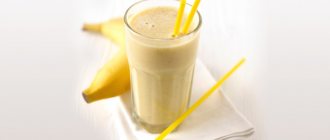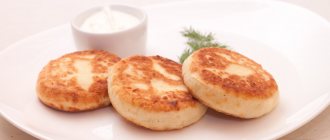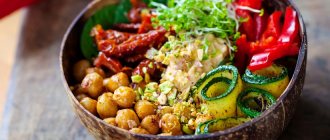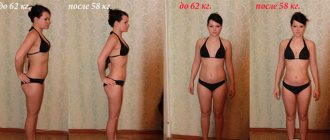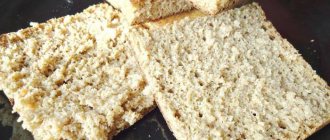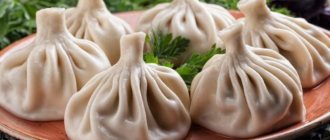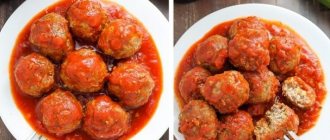12/16/2014 / Dairy products
| Homemade cheese, BJU and calorie content per 100 g of product | |||
| Calorie content 113 kcal | Proteins 12.7 g | Fat 5 g | Carbohydrates 4 g |
Homemade cheese is valued simply because it is made without preservatives or chemical additives. It is very useful for its nutrients. It cannot even be compared with those cheeses that are sold in stores. A person who makes cheese for his own consumption will not add harmful substances to it.
Making homemade cheese is very easy. Boil milk and make cottage cheese out of it. Then, using a special press, bring it to a solid state. It is best to use fresh milk. The lower the calorie content of the milk, the less caloric the cheese is. So for people who do not want to gain weight, you can use low-calorie milk. This is also a plus when making cheese at home, since the cheese maker himself regulates the fat content of the finished product.
Each person makes cheese to their own taste. Some people like to cook cheese with herbs, others add more salt. By adding sugar, you can get a sweet dessert cheese.
It is not recommended to buy low-quality cottage cheese in stores for further cheese preparation, since very often instead of cottage cheese they can sell a cottage cheese product, from which cheese obviously will not be made.
Properties of homemade cheese
Nutritional value and composition | Vitamins | Minerals
How much does homemade cheese cost (average price per 1 kg)?
Moscow and Moscow region.
400 rub.
From the name of homemade cheese, it immediately becomes clear what technologies are used in the manufacture of this product. Cheese producers are adopting home cooking recipes to expand the range of their products and meet the demands of a wider range of consumers.
We think it’s no secret that home-cooked meals have always been considered extremely tasty and healthy. People have been making homemade cheeses since time immemorial. Moreover, almost every housewife had her own recipe for homemade cheese. And only over time, manufacturers began to produce such cheese on an industrial scale.
Although it is unlikely that real homemade cheese can compare with store-bought cheese in its taste, aroma or consumer qualities. We invite you to take a closer look at homemade cheese. Firstly, cheese made at home will have excellent taste, nutritional and beneficial properties for the human body.
Secondly, you will receive a guaranteed quality product that will not contain preservatives, chemicals or flavoring additives, which unscrupulous manufacturers often add to cheeses. Thirdly, your own homemade cheese will cost much less than the store-bought equivalent.
And, perhaps, the most important quality of homemade cheese is that it contains all the useful elements, vitamins and organic compounds that milk contains. For example, just half a kilogram of homemade cheese will contain the same amount of protein, lactic fatty acids, vitamins, and other beneficial compounds as 4.5 liters of fresh cow's milk.
Many people are mistaken in believing that homemade cheese is difficult to make on their own. Yes, there are some specifics, but if you really want it, this won’t stop you from trying yourself as a cheese maker. To make cheese at home you will need fresh cow's milk.
In this case, the rule the more the better will work one hundred percent, because The amount of cheese directly depends on the amount of milk. The calorie content of homemade cheese also depends on the milk (from 113 Kcal per 100 grams) that you will use in making the product. The fattier the cow's milk, the higher the calorie content of homemade cheese.
The most delicious homemade cheese is made from fresh country milk, but if you don’t have the opportunity to find it, then full-fat cottage cheese is perfect. By the way, homemade curd cheese is made much faster than that made from milk. Usually homemade cheese belongs to the soft varieties, because For the production of hard cheeses, specific production equipment (press) is required.
What’s distinctive is that the future taste of homemade cheese depends only on you. When preparing, you can add to homemade cheese, in addition to salt, any other ingredients, spices, herbs or herbs, all at your discretion.
Calorie content of homemade cheese. Chemical composition and nutritional value.
Nutritional value and chemical composition of “homemade cheese”.
The table shows the nutritional content (calories, proteins, fats, carbohydrates, vitamins and minerals) per 100 grams of edible portion.
| Nutrient | Quantity | Norm** | % of the norm in 100 g | % of the norm in 100 kcal | 100% normal |
| Calorie content | 248.27 kcal | 1684 kcal | 14.7% | 5.9% | 678 g |
| Squirrels | 14 g | 76 g | 18.4% | 7.4% | 543 g |
| Fats | 17.08 | 56 g | 30.5% | 12.3% | 328 g |
| Carbohydrates | 4.94 g | 219 g | 2.3% | 0.9% | 4433 g |
| Organic acids | 0.4 g | ~ | |||
| Water | 44.9 g | 2273 g | 2% | 0.8% | 5062 g |
| Ash | 2.876 g | ~ | |||
| Vitamins | |||||
| Vitamin A, RE | 197.2 mcg | 900 mcg | 21.9% | 8.8% | 456 g |
| Retinol | 0.181 mg | ~ | |||
| beta carotene | 0.025 mg | 5 mg | 0.5% | 0.2% | 20000 g |
| Vitamin B1, thiamine | 0.051 mg | 1.5 mg | 3.4% | 1.4% | 2941 g |
| Vitamin B2, riboflavin | 0.22 mg | 1.8 mg | 12.2% | 4.9% | 818 g |
| Vitamin B4, choline | 81 mg | 500 mg | 16.2% | 6.5% | 617 g |
| Vitamin B5, pantothenic | 0.228 mg | 5 mg | 4.6% | 1.9% | 2193 g |
| Vitamin B6, pyridoxine | 0.1 mg | 2 mg | 5% | 2% | 2000 g |
| Vitamin B9, folates | 3.858 mcg | 400 mcg | 1% | 0.4% | 10368 g |
| Vitamin B12, cobalamin | 0.48 mcg | 3 mcg | 16% | 6.4% | 625 g |
| Vitamin C, ascorbic acid | 2.8 mg | 90 mg | 3.1% | 1.2% | 3214 g |
| Vitamin D, calciferol | 0.468 mcg | 10 mcg | 4.7% | 1.9% | 2137 g |
| Vitamin E, alpha tocopherol, TE | 0.067 mg | 15 mg | 0.4% | 0.2% | 22388 g |
| Vitamin H, biotin | 0.2 mcg | 50 mcg | 0.4% | 0.2% | 25000 g |
| Vitamin K, phylloquinone | 0.1 mcg | 120 mcg | 0.1% | 120000 g | |
| Vitamin RR, NE | 0.351 mg | 20 mg | 1.8% | 0.7% | 5698 g |
| Niacin | 0.091 mg | ~ | |||
| Macronutrients | |||||
| Potassium, K | 50.08 mg | 2500 mg | 2% | 0.8% | 4992 g |
| Calcium, Ca | 220.02 mg | 1000 mg | 22% | 8.9% | 455 g |
| Magnesium, Mg | 20.26 mg | 400 mg | 5.1% | 2.1% | 1974 |
| Sodium, Na | 50.32 mg | 1300 mg | 3.9% | 1.6% | 2583 g |
| Sera, S | 45.76 mg | 1000 mg | 4.6% | 1.9% | 2185 g |
| Phosphorus, P | 79.5 mg | 800 mg | 9.9% | 4% | 1006 g |
| Chlorine, Cl | 0.1 mg | 2300 mg | 2300000 g | ||
| Microelements | |||||
| Iron, Fe | 0.122 mg | 18 mg | 0.7% | 0.3% | 14754 g |
| Yod, I | 0.7 mcg | 150 mcg | 0.5% | 0.2% | 21429 g |
| Cobalt, Co | 2 mcg | 10 mcg | 20% | 8.1% | 500 g |
| Manganese, Mn | 0.0204 mg | 2 mg | 1% | 0.4% | 9804 g |
| Copper, Cu | 45.19 mcg | 1000 mcg | 4.5% | 1.8% | 2213 g |
| Selenium, Se | 13.516 mcg | 55 mcg | 24.6% | 9.9% | 407 g |
| Fluorine, F | 14.83 mcg | 4000 mcg | 0.4% | 0.2% | 26972 g |
| Chromium, Cr | 1.18 mcg | 50 mcg | 2.4% | 1% | 4237 g |
| Zinc, Zn | 0.5 mg | 12 mg | 4.2% | 1.7% | 2400 g |
| Digestible carbohydrates | |||||
| Mono- and disaccharides (sugars) | 1.9 g | max 100 g | |||
| Essential amino acids | |||||
| Arginine* | 0.559 g | ~ | |||
| Valin | 0.893 g | ~ | |||
| Histidine* | 0.367 g | ~ | |||
| Isoleucine | 0.785 g | ~ | |||
| Leucine | 1.294 g | ~ | |||
| Lysine | 1.053 g | ~ | |||
| Methionine | 0.36 g | ~ | |||
| Methionine + Cysteine | 0.147 g | ~ | |||
| Threonine | 0.62 g | ~ | |||
| Tryptophan | 0.195 g | ~ | |||
| Phenylalanine | 0.661 g | ~ | |||
| Phenylalanine+Tyrosine | 0.23 g | ~ | |||
| Nonessential amino acids | |||||
| Alanin | 0.523 g | ~ | |||
| Aspartic acid | 1.084 g | ~ | |||
| Glycine | 0.317 g | ~ | |||
| Glutamic acid | 2.66 g | ~ | |||
| Proline | 1.146 g | ~ | |||
| Serin | 0.785 g | ~ | |||
| Tyrosine | 0.627 g | ~ | |||
| Cysteine | 0.16 g | ~ | |||
| Sterols (sterols) | |||||
| Cholesterol | 181.34 mg | max 300 mg | |||
| Saturated fatty acids | |||||
| Saturated fatty acids | 10.8 g | max 18.7 g | |||
| 4:0 Oil | 0.398 g | ~ | |||
| 6:0 Kapronovaya | 0.234 g | ~ | |||
| 8:0 Caprylic | 0.137 g | ~ | |||
| 10:0 Kaprinovaya | 0.308 g | ~ | |||
| 12:0 Lauric | 0.345 g | ~ | |||
| 14:0 Miristinovaya | 1.24 g | ~ | |||
| 15:0 Pentadecane | 0.002 g | ~ | |||
| 16:0 Palmitinaya | 3.64 g | ~ | |||
| 17:0 Margarine | 0.006 g | ~ | |||
| 18:0 Stearic | 1.665 g | ~ | |||
| 20:0 Arakhinovaya | 0.006 g | ~ | |||
| Monounsaturated fatty acids | 4.55 g | min 16.8 g | 27.1% | 10.9% | |
| 16:1 Palmitoleic | 0.354 g | ~ | |||
| 17:1 Heptadecene | 0.002 g | ~ | |||
| 18:1 Oleic (omega-9) | 3.916 g | ~ | |||
| 20:1 Gadoleic (omega-9) | 0.008 g | ~ | |||
| Polyunsaturated fatty acids | 0.712 g | from 11.2 to 20.6 g | 6.4% | 2.6% | |
| 18:2 Linolevaya | 0.502 g | ~ | |||
| 18:3 Linolenic | 0.19 g | ~ | |||
| 20:4 Arachidonic | 0.02 g | ~ | |||
| Omega-3 fatty acids | 0.2 g | from 0.9 to 3.7 g | 22.2% | 8.9% | |
| Omega-6 fatty acids | 0.5 g | from 4.7 to 16.8 g | 10.6% | 4.3% |
The energy value of homemade cheese is 248.27 kcal.
Primary Source: Created in the application by the user. Read more.
** This table shows the average levels of vitamins and minerals for an adult. If you want to know the norms taking into account your gender, age and other factors, then use the “My Healthy Diet” application.
Cheese composition
The composition, benefits and harm of a particular variety depend on many indicators, among which the method of production of the product is important: rennet or fermented milk. The taste is also affected by the raw materials used - milk, cottage cheese. In cheese making, cow's and goat's milk are most often used, and sheep's milk is used a little less often.
We recommend reading: Milk: beneficial properties and contraindications
In general, the product includes:
- water, the mass fraction of which is 42-48%;
- milk fat - 45-50%;
- salt – 1.5-3.5%;
- the remaining percentage is protein.
Attention! It is noteworthy that cheese is absorbed by the human body much easier and to a greater extent than the milk from which it is produced.
Application
Homemade cheese serves as an excellent snack, after which a person remains full for a long time. You can make different sandwiches with it, adding different ingredients to suit your taste. And homemade cream cheese can even be spread on bread.
Market Analytics
- Global cosmetics market 2021: an unprecedented test for the global cosmetics industry
- Top 10 Cosmetic Research and Development of 2021
- 2020 in the beauty industry – innovation without borders
Convenient search for beauty salons on our website
Beauty salons in Moscow Beauty salons in St. Petersburg Beauty salons in Ekaterinburg Beauty salons in Novosibirsk
Latest blog posts on our website
- Naturecream / Properties of the “Sunny” oil itself
- Naturecream / “Sugar” wrinkles - or what glycation can do
- Naturecream / Esterified oils
- Naturecream / Arnica - the magical plant of alchemists
- Naturecream / Tremella Extract - Snow Mushroom Detox for Skin
- Prostye-sovety / How to visually enlarge your lips with makeup
- Naturecream / Apricot kernel oil for face
- Naturecream / MATRIXYL3000 - the best skin elasticity stimulator
- Naturecream / SPF in Natural Oils
- Naturecream / Geranium (Pelargonium) oil for skin health and beauty
Latest forum topics on our website
- Natalya / How to properly make a gelatin mask?
- Mrs._Smith / Badly sunburned! What to do?((
- Ice / Is it necessary to combine fitness classes with a diet?
- Antonova / What can be used for hair loss?
- Radio operatorKat / Who was on a protein diet?
Other articles in this section
| Livaro cheese Livarot cheese is one of the rather exotic varieties of cheese that was bred in Normandy back in the 18th century. He very quickly earned recognition and became quite popular among all the French. Now it is considered an elite cheese all over the globe. A distinctive feature of Livaro cheese is that the mold on it is not ordinary, but red. The raw material for it is the best, selected cow's milk. Its quality largely depends on the time of year. The ideal periods for making this cheese are those when the cow can eat exclusively fresh grass, which means in summer, spring and autumn. |
| Ryazhenka 6% In every product that a person makes from milk, you can find many minerals, vitamins, proteins and fats that are useful and necessary for the body. One of these is ryazhenka 6%. |
| Sbrinz cheese Sbrinz cheese is a delicious cheese from the heart of Switzerland. It has an islandy, piquant taste and is made from dense, selected cow's milk, rennet and salt. This is a natural product and has no chemical additives. |
| Buffalo milk Nowadays, buffalo milk is very popular. This product is widely distributed in the cuisines of Georgia, Azerbaijan, Armenia, Dagestan, Indonesia, Egypt and India. Since the Indian people consider the cow to be a sacred animal, it is natural that the country has a much larger number of animals such as the buffalo. They are found in Italy, Bulgaria, Romania, Turkey and, of course, India. |
| Milk 1% Many peoples in the world create legends about such a drink as milk. In ancient Rome, residents believed that Jupiter himself was fed with milk. For its nutrition they used goat milk - Amalthea. That is why people brought milk to him as a sacrifice. Residents of Olympus also often drink milk. |
| Cream 35% (fat) Cream is a type of dairy product that is obtained by settling milk or distilling it through a separator. The second method is faster and more efficient for large volumes of products. |
| Asiago cheese In the south of Europe there is a small but very beautiful state, which is famous for its great and rich history, beautiful architecture, the unique aroma of wines and the sophistication of various dishes. Of course, this is Italy. Cheese occupies a significant place in Italian cuisine. There are more than 400 varieties of this Italian product, but there are some that are known all over the world. It is thanks to climatic conditions, centuries-old recipes and manufacturing technology that the taste of each cheese is famous for its uniqueness and originality. One of the cheeses that is among the ten best cheeses in Italy is the semi-soft cheese Asiago, whose history dates back about a thousand years ago. Asiago begins its history in the Trentino region. In the beginning, cheese was made from sheep's milk, but since the 15th century, due to progress in cheese making, cow's milk came to replace it. It was only in the 20th century that maturation stages were included in the production process. Nowadays, you can find two types of Asiago cheese - fresh (young) Presato and ripened d'Allevo. |
| Green Pesto cheese Pesto cheese takes its rightful place among the most expensive and unusual varieties of cheese. The name comes from the name of the sauce, which contains butter, pine nuts and garlic. To prepare this type of cheese, many manufacturers use another cheese as a base - Parmesan. But Dutch chefs, in turn, decided to initially use the famous Pesto sauce to create this cheese product. |
| Gouda cheese Gouda cheese is one of the most popular types of cheese. This is a hard cheese made from whole cow's milk. This type of cheese appeared a long time ago, back in the 12th century, its homeland is a small town in South Holland with the same name Gouda. There they first learned to make this type of cheese, and the city of Gouda is still a major cheese-making center in Holland. Gouda cheese has a fairly high fat content - about 48-51%. The raw material for making cheese is high-quality whole milk. |
| Kaymak This fermented milk product, in its properties, is something intermediate between cottage cheese, butter and regular sour cream. In this regard, kaymak can be characterized by completely different consistency and thickness. |
Low-calorie cheese at home. How to prepare the dish “Low-calorie homemade cheese”
- You need cottage cheese in grains, dry, not creamy, otherwise you won’t get cheese.
- Place the cottage cheese in a saucepan, add milk and place on low heat.
- Cook, stirring occasionally, for 10-15 minutes. The mass will begin to separate, releasing the whey.
- After boiling, cook for 10 minutes.
- Place the hot mixture on a sieve (to drain all the whey).
- Put the folded cottage cheese back into the pan, add butter, egg, salt, soda and cook over low heat for about 10 minutes.
- When the mass melts completely (becomes absolutely smooth and stretchy), cook for another 5 minutes.
- Grease the mold with vegetable oil and very quickly transfer the hot cheese mass into it (it quickly loses its plasticity).
- Leave to cool on the counter, then transfer to the refrigerator until completely set.
Bon appetit!
